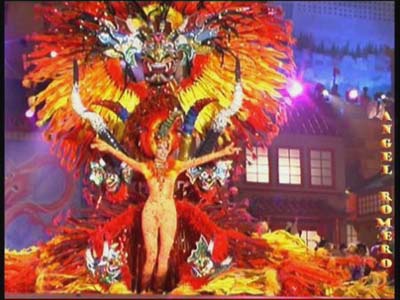by Alvaro L¾pez and Francisco Bastida

by Alvaro L¾pez and Francisco Bastida

Carnivals festivities are very old. The Egyptians celebrated them in honour of the god Apis (The ox) while the Romans had the god Baco, the Saturnian andthe Lupercales.
The "Lupercos" (Synonimous of wolf) were a group of Roman priests who celebrated the Lupercalia festivities, that started on the 15 th of February. They went round the Palatino, with strings made of goatskin or dogskin, with which they
Galicia┤s carnival whipped whoever they met. Women offered their hands and barks to be wipped, just to be sure they become
fertile.
|
|
|
In Galice, these are the oldest festivities. They are marked by the noon of January, called long night moon. The new moon or "lua dos lobos" marks the beginning of these festivals.Some people dress up with very old costumes made of colourful paper; they wear mitres with wolves and sunswasticas. Wander the streets, carrying pizzle whips and beatingthe passersby. Others take some flour and they Viana
catterit in order to have everything white and Verin fertile. You can also see villages carrying
swollen bladders tohit people though always in a harnful way; they sometimes wear small bells (the ones used by the cows) to frighten the malignant ghosts.

|
|
|
In fact this is the oldest carnival in Spain.
About the wolf urged by the moon, longing for life: he wolf crossing the forest as quick as a Ginzo flash.
In the rest of Spain there are other famous festivals such as the ones in Cadiz, Tenerife and Sitges. All of them have comical and magical elements, a mixture of colour, rhytm and fantasy. They always have a goddess, the queen of the carnival.On these occasions people dress up with different disguises, most of them are caricatures of the reality; folksongs are sung remembering in a satirical way, the most important people and events of the years.
Apart from this, these are also very colourful processions.
Tenerife┤s carnival
